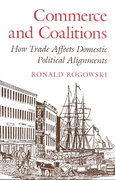Please solve problem 2.5
Problem 2.4. Consider an economy where the aggregate demand function is given by the following equation: Y 445+055r +12(M') '_ ' ' 39, and the price adjustment mechanism is described by the function: YH 300 = 0,3( I\" 300 )+11:f In equilibrium, the price level is 1, investment expenditure is PLN 100 billion, and the nominal money supply is PLN 180 billion. Calculate what will happen to the economy as a result of the interest rate hike by the central bank, which will cause a decrease in investment and nominal money supply in equilibrium, PLN 20 billion each. a) Calculate inflation, price levels and GDP for the rst five years following the tightening of monetary policy, assuming people expected price stability. b) Illustrate the mechanism of economic adjustment using the AS-AD model. c) Perform analogous calculations for 8 years, assuming that inflation expectations are adaptive and can be expressed as rrf = 0,5,1th d) Describe the process of adjusting the economy to higher interest rates for both scenarios. Problem 2.5. Consider the economy presented in Problem 2.4 and assume that there was no ination (i.e. prices were stable) at equilibrium and that households did not expect it in the future. Analyze how the economy will react to an exogenous price shock (e.g. a global increase in oil prices) that will cause a one-offjump in prices by 10% in the first year. a) Calculate the paths of inflation, GDP and prices in the following years. After how many years will the economy (approximately) return to equilibrium? b) Analyze the reaction of the economy in a situation where the central bank increases the nominal money supply by 5% in the rst year, so as to mitigate the effects of nominal money demand growth. How long will it take the economy to recover this time? c) How quickly will the economy return to equilibrium if the central bank keeps the real money supply unchanged? d) Compare the nal new price levels in equilibrium in points (a)(c). What is the difference? e) How would your answers differ, if inflation expectations in the economy were adaptive (e-g- e = OAR-Fl)? f) Why does the central bank sometimes decide to tighten monetary policy amid a large price shock? n__l_l____l' A _!.__._i_ 'l'__.l__n..l_ __._I__ _I____!I___l|__.l.l__ __._._.I.!_._







